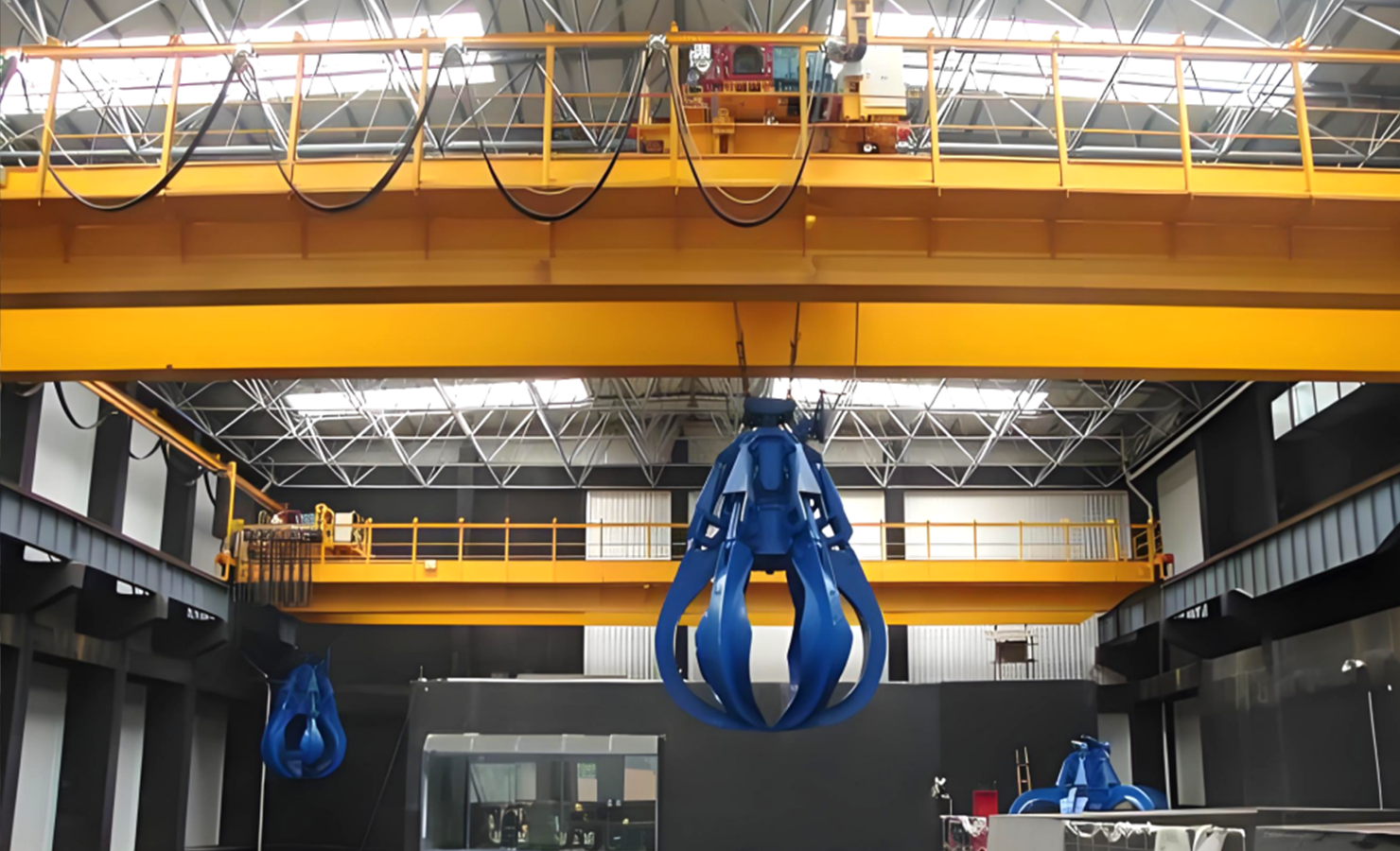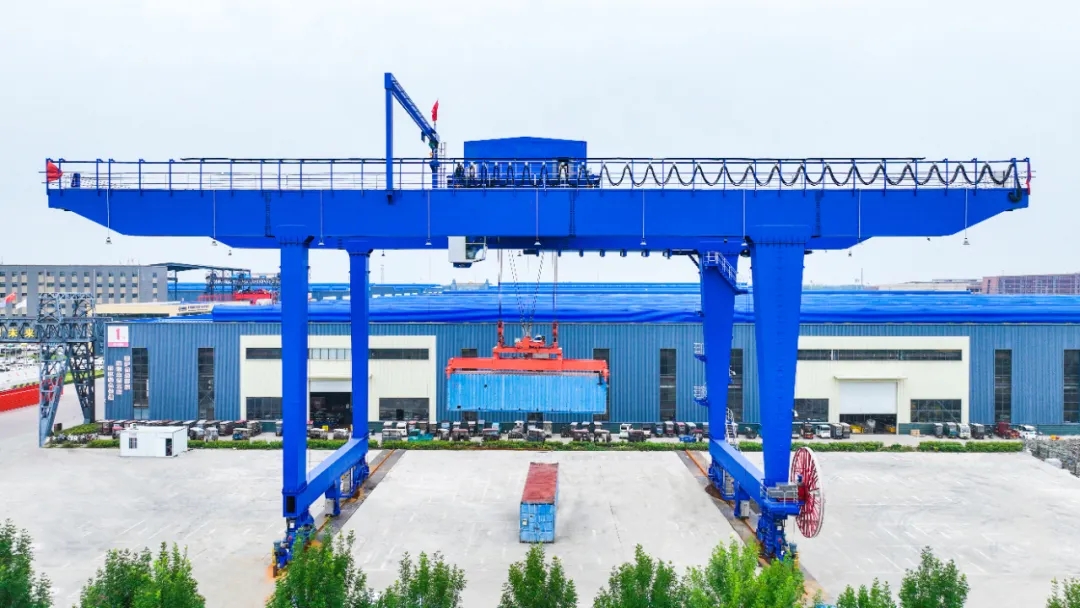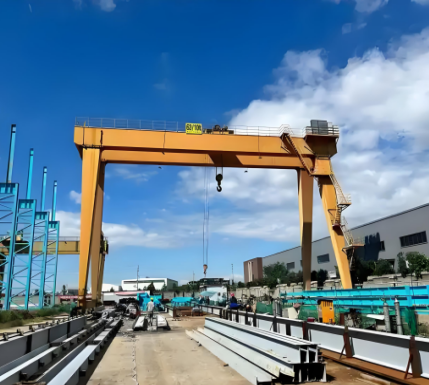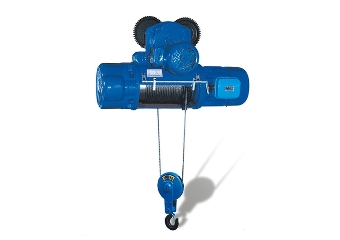Grab Bucket Crane Common Failures and Maintenance Guide
Introduction
Grab bucket cranes (also known as grab cranes or crane grab buckets) are widely used in ports, mines, steel plants, bulk material handling, and waste treatment plants. Due to long-term operation in heavy-duty, dusty, or corrosive environments, they are prone to failures.
Once failure occurs, it may cause production downtime, equipment damage, or even safety accidents.
This guide covers grab crane common failures, troubleshooting tips, and maintenance methods, helping operators and maintenance teams ensure safe and stable operation.
I. Common Failures of Grab Cranes
1. Mechanical System Failures
| Fault Phenomenon | Possible Cause |
|---|---|
| Grab bucket cannot close tightly / bucket cracks | Wear & tear, material fatigue, stress concentration |
| Wire rope wear, broken strands, rope jumping | Long-term use, poor lubrication, improper installation |
| Gearbox abnormal noise / oil leakage | Bearing damage, lack of lubrication, seal failure |
| Wheel uneven wear (rail gnawing), rail misalignment | Poor rail installation, wheel misalignment, drive out of sync |
| Travel motor cannot start, abnormal noise, overheating | Power fault, overload, cooling failure |
2. Electrical System Failures
| Fault Phenomenon | Possible Cause |
|---|---|
| PLC module failure, random actions | Component aging, unstable voltage, program conflict |
| Control button failure | Contact oxidation, circuit break, signal interference |
| Damaged cable (leakage, short circuit) | Mechanical damage, insulation aging, corrosion |
| Terminal loose, heating or burning | Poor connection, high resistance, overload |
| Hoist/slewing motor overheating, abnormal speed | Overload, bearing failure, encoder fault |
3. Hydraulic System Failures
| Fault Phenomenon | Possible Cause |
|---|---|
| Hydraulic oil contamination / deterioration | Oil degradation, impurities, poor cooling |
| Hydraulic valve stuck, action failure | Sediment blockage, spring failure, spool wear |
| Cylinder oil leakage, insufficient thrust | Seal damage, inner wall wear, low pressure |
| Pump pressure/flow drop | Pump wear, air suction, drive motor fault |
| Internal leakage (efficiency loss) / external leakage | Seal failure, wear, improper assembly |
II. Maintenance Guidelines

1. Daily Maintenance (Operator Responsibility)
-
Pre-operation check: Inspect grab bucket, wire rope, wheels, rails, electrical devices, confirm no visible deformation, wear, or loose connections.
-
During operation: Monitor abnormal noise, vibration, hydraulic pressure, oil leakage.
-
After operation: Clean dust and residues, lubricate ropes, hinges, and bearings with suitable lubricants.

2. Regular Maintenance (Professional Technician Responsibility)
-
Monthly: Replace worn parts (wire rope, seals), check hydraulic oil quality, measure insulation resistance, tighten bolts.
-
Quarterly: Inspect gearbox, replace gears/bearings, calibrate limit switches, adjust wheel alignment.
-
Yearly: Conduct non-destructive testing of welds, overhaul electrical system, clean hydraulic circuits, replace filters, test safety limiters.
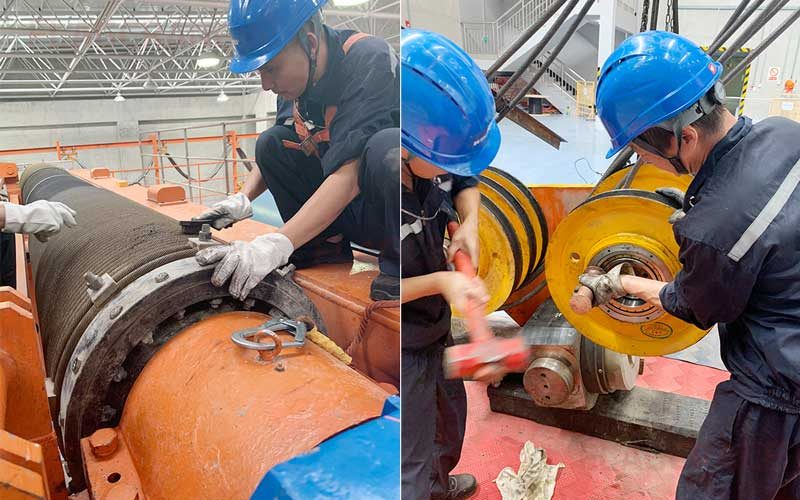
3. Special Maintenance
-
Special working conditions:
-
Dust/corrosion: Increase inspection frequency, shorten oil replacement cycle, apply anti-corrosion coating.
-
Winter: Preheat hydraulic system, use low-temperature oil.
-
Summer: Check cooling systems to avoid overheating.
-
-
After failure:
-
Identify root cause before replacing parts.
-
Ensure cleanliness for hydraulic repair.
-
Cut power before electrical repair.
-
Test run before returning to service.
-
III. SLKJ Crane Service Advantage
-
Fault diagnosis: Professional technical team, rapid troubleshooting.
-
Reliable spare parts: Long-term cooperation with well-known suppliers ensures quality.
-
Customized solutions: Tailored grab bucket crane design according to different working conditions (coal, ore, grain, garbage, dredging).
-
Training support: Operator training to improve equipment management and safety.
Conclusion – Ensure Reliable Operation with SLKJCrane

Expert in Overhead Crane/Gantry Crane/Jib Crane/Crane Parts Solutions
Eileen Hu
With 20+ years of experience in the Crane Overseas Export Industry, helped 10,000+ customers with their pre-sales questions and concerns, if you have any related needs, please feel free to contact me!
Frequently Asked Questions (FAQ) About Grab Bucket Crane Maintenance
Typically every 6–12 months depending on usage, but it must be replaced immediately if broken strands exceed standard.
Use high-viscosity, anti-wear lubricants suitable for heavy-duty and dusty environments.
Regularly check seals, maintain proper oil level, and replace aging gaskets.
Keep oil clean, replace filters, monitor temperature, and schedule periodic oil changes.
Intermodal Gantry Cranes (RMG & RTG) — Engineering Playbook
Intermodal Gantry Cranes (RMG & RTG) — Engineering Playbook This engineering-oriented guide targets rail-to-truck operations, inland ports (ICDs),
Electric Hoist Gantry Crane: Complete Sizing & Selection Guide | SLKJCrane
Electric Hoist Gantry Crane: A Complete Sizing & Selection Guide Choosing the right electric hoist gantry crane comes
MG Double Girder Gantry Crane with Hook | Heavy-Duty Outdoor Lifting
MG Double Girder Gantry Crane with Hook: Structure, Specs & Applications An MG double girder gantry crane with
Steel Mill Wire Rope Lubrication for Metallurgical Hoists | Cut Downtime by 41%
Steel Mill Wire Rope Lubrication for Metallurgical Hoists: Root-Cause Fix & Proven Results Wire rope failures in steel
Contact Us Now
Have questions about our cranes or need help?
Reach out to our friendly team for expert support and guidance.
We are here to help you power your journey towards a greener future !
Address: Crane Industry Park, Xinxiang City Henan Provice

